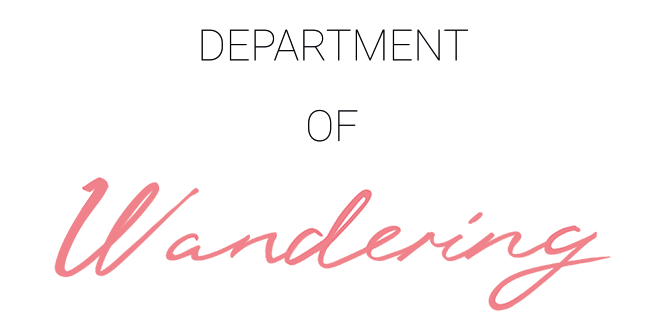
One of the most magnificent regions in Europe is the south of Spain, commonly called Andalusia. It’s rich in culture, history and wonderful landscapes. Because there are just so many sites to see and so much to do, I highly recommend spending a week or two in the region if you can. If it’s your first time in southern Spain, we’ve got you covered with these top tips to know before you go!
A beginner’s guide to Andalusia: 10 things to know before you go
1. It’s easy to get around between cities by bus or train
If you’re heading to Andalusia, the easiest place to fly into and home to the region’s major airport, is probably Seville. However, we travelled there from Madrid very easily by train. Luckily, navigating the major cities in the area either by public bus or train is simple. The major cities of Andalusia include: Seville, Granada, Cordoba, Malaga, and Cadiz.
Related: Seville or Madrid? Which City Should You Visit?

2. They’re on the Euro
Spain is part of the European Union. Just in case you want to convert any money ahead of time or figure out some budgeting, know that Spain’s currency is the Euro.
3. History about Isabelle and Ferdinand persists
This famous King and Queen of Spain ruled this region (and then some) during the 15th century. Spain was a very powerful nation during their reign and flourished under their guidance. And here we are, still talking about them many centuries later! It’s no wonder Isabelle and Ferdinand are still honored in the architecture and stories of Andalusia. They were ‘stationed’ in Granada during the conquest of the Moors, at the Alhambra, a now-historic palace that annually attracts hundreds of thousands of tourists. Notice the ‘F’ and ‘Y’ (for Ferdinand and Isabella, in Spanish) in the ceiling design below.

4. People are friendly
We found people to be very friendly. They weren’t necessarily bending over backwards to assist us or say hello but we found if we had questions we could always find someone willing to answer them and if we were friendly, they were friendly back. A lot of people speak enough English to have a conversation (and hand motions and body language always helps!).
5. There’s a lot of Moorish influence
Andalusia is just north of Africa. It was under Islamic rule before Isabelle and Ferdinand conquered the region, which is why there’s a lot of Moorish influence in the area. The Moors inhabited the Iberian Peninsula, which is now part of modern-day Portugal and Spain (Portugal shares Spain’s western border). This influence is mainly seen in the incredible architecture in Andalusia and the intricate ornamentations. I was in love with photographing the geometric patterns and colorful tiles that surrounded us at all the historic sites we visited, like Granada’s Alhambra pictured below.
6. Ham, olives and olive oil is everywhere
Ham in Andalusia is like nothing you’ve ever tasted! Jamon, as it’s called in Spanish, comes in two readily available varieties: Iberico or Serrano. You’ll generally find that Jamon Iberico is a bit pricier. This is due to the diet of acorns that the pigs are fed during the last days of their lives, which gives the meat and fat a soft and subtle nutty flavor. The price difference is also due to the amount of time the meat is cured. You’ll find meat prices vary wherever you go and depending on the variety you choose.
Olives are often served as a tapa (or ‘small plate’) with a drink order at any bar or restaurant. If you love olives you’ll be in heaven in Spain! Spanish olives in Andalusia were, by far, the best I’ve ever had. Olive oil here is exceptional and you’ll find it on tables everywhere you go.
7. Flamenco is for tourists
Yes, Spain is the home of Flamenco. However if you ask any tour guide for the ‘local’ Flamenco spots, they’ll answer that it’s really a tourist attraction. Even in Granada, which is known for its gypsies who perform Flamenco and is regarded as the most ‘authentic’ place to see a show, it’s still regarded as a tourist activity. Despite this, it’s still amazing to see! Simply do your research and know what you want to get out of the show before you spend money and see one. That way you will be happy with the investment and know what to expect.

8. Beware of Mondays – things are closed!
After our Sunday morning tour of Cordoba that oriented us with the city shortly after our arrival, we learned that in Andalusia, most things close Sunday afternoon and remain closed for ALL of Monday. We were shocked! It was actually a big issue for us because we were leaving Cordoba Tuesday morning to head to Granada. We learned a valuable lesson that day – look up the opening hours of attractions ahead of time! In Cordoba, we found the Alcazar and Patio Tour, in particular, were closed Mondays, in addition to other attractions. If we knew this ahead of time we would have planned a bit differently.
9. Summer is peak season
Many Europeans flock towards the coast during the hottest months of the year. This includes June through September. If you want to get a great deal on flights, are interested in fewer crowds, or wish to visit in the off season, perhaps research visiting October through May instead.

10. Tapas aren’t always free
We heard tapas were plentiful and free in Andalusia, Spain. Obviously, we were super excited about this since we love food. It’s not that it turned out to be false but I feel it’s wise to manage expectations with this. If you watch Anthony Bourdain’s No Reservations episode in Spain you’ll be wrongfully led astray. You’ll be led to believe incredible tapas dishes parade themselves out of the kitchen with each drink you order at no cost to you! This is not the case. We found we could expect something small with a drink order in most restaurants and bars (but certainly not all). The complimentary tapa was usually olives (which are delicious and welcomed).
In many places we had to ask about it. They knew we clearly weren’t locals and that’s most likely why we felt left out. Certainly do not expect to be dined as a celebrity like Chef Bourdain – but perhaps hope for something small with each alcoholic beverage you order. If you’re not automatically offered a tapa, simply politely ask about it. Certainly plan to actually order a meal (or additional tapas) if you’re hungry and want to feel full though!

Headed to Spain? Also check out:
- Seville or Madrid: Which City Should You Visit?
- 15 Photos That Will Make You Want to Visit Barcelona
- One Perfect Day in Granada Spain
Like this post? Pin it for later!

Have you been to Andalusia? Share your tips in the comments below!





Hi there!
Great beginner guide to Andalusia! I think you covered most of the basics pretty well! Just a little thing on the tapas part; actually Granada is the only city in Andalusia where you can expect to get a good decent tapas with your drink. All the other cities, you will order the actual food tapas a side. Don’t know if you became aware of that difference. I lived in Granada for almost 2 years, so I can for sure say that there is a difference 😀
Thanks for clarifying Becci! Yet another reason to visit Granada! 😉